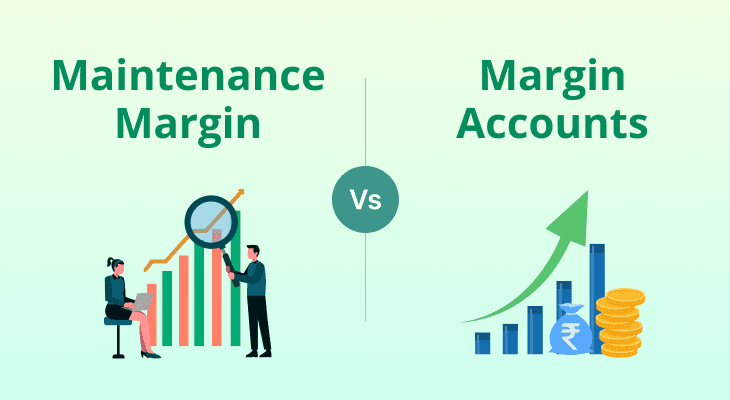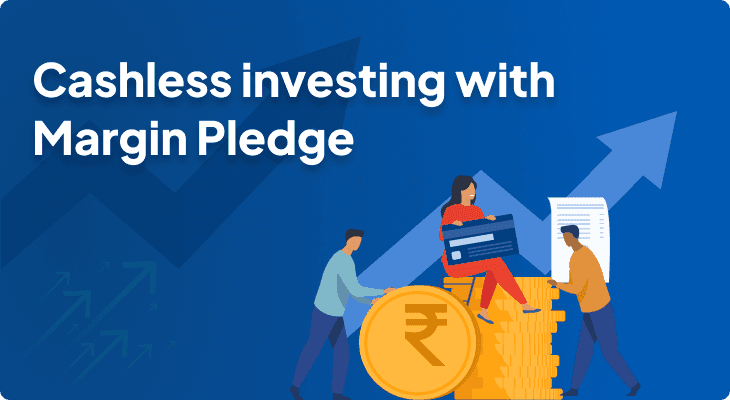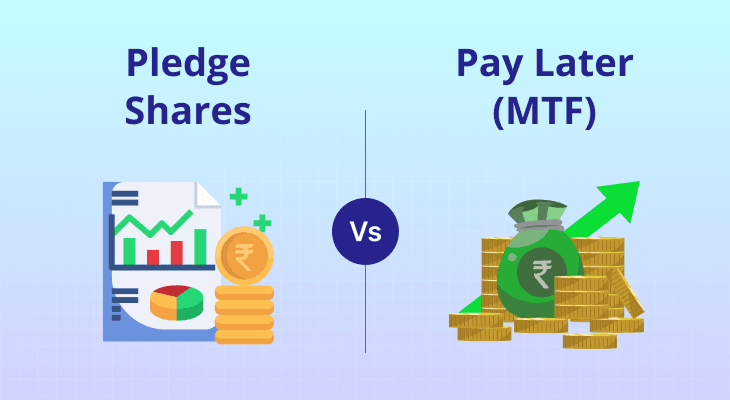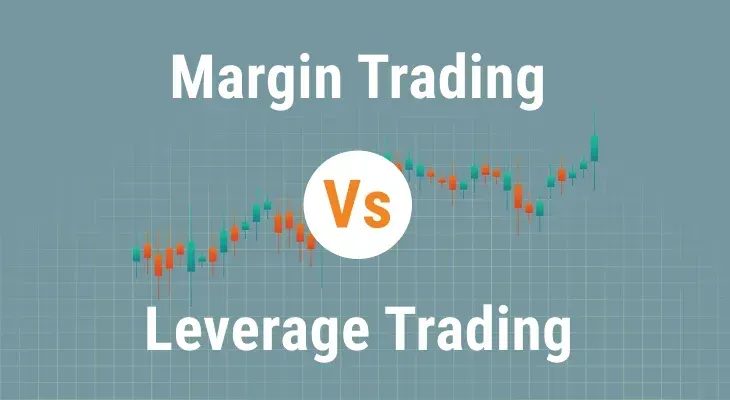
Maintenance Margin vs. Margin Accounts: Key Differences Explained
Margin trading allows investors to borrow funds from brokers to increase their purchasing power, offering potential for higher returns but also greater risks. Two crucial aspects of margin trading are maintenance margin and margin accounts. If you’re considering margin trading, then understanding their differences and nuances is essential for making informed trading decisions.
What is Maintenance Margin?
Let’s start by understanding what ‘maintenance margin’ is. Maintenance margin refers to the minimum amount an investor must maintain in their margin account to continue with the leveraged positions they have taken. It is a safeguard designed to protect both the investor and the brokerage from excessive losses in case the value of the securities declines severely. If your equity falls below this level due to market fluctuations, the broker will issue a margin call, requiring you to deposit more funds or sell some of your holdings to meet the margin requirement.
The maintenance margin acts as a safety net in leveraged trading. Without it, a sharp decline in the value of your investments could leave you unable to repay the borrowed amount, resulting in significant losses for both you and the broker. That’s why most brokers require a maintenance margin of 25%-30% of the total market value of the securities in the account. However, this can vary depending on the broker and the type of securities being traded.
Understanding Maintenance Margin in Detail
Let’s understand the concept of maintenance margin with a detailed example. Imagine you want to purchase stocks worth ₹ 2,00,000, but you only have ₹ 1,00,000. To complete the transaction, you borrow the remaining ₹ 1,00,000 from your broker using a margin account.
Step-by-Step Breakdown:
Initial Investment:
Total value of stocks = ₹ 2,00,000
Your equity = ₹ 1,00,000
Borrowed amount = ₹ 1,00,000
Equity percentage = ₹ 1,00,000 ÷ ₹ 2,00,000 = 50%
Maintenance Margin Requirement:
The broker sets the maintenance margin at 30% of the current market value of the stocks.
Minimum equity required = ₹ 2,00,000 × 30% = ₹ 60,000
Stock Price Drops:
Suppose the stock value falls to ₹ 1,50,000.
New equity = ₹ 1,50,000 (stock value) - ₹ 1,00,000 (borrowed funds) = ₹ 50,000
New equity percentage = ₹ 50,000 ÷ ₹ 1,50,000 = 33.33%
Since your equity is above the 30% maintenance margin, there’s no margin call.
Further Drop in Stock Value:
If the stock value falls to ₹ 1,40,000, the equity becomes:
₹ 1,40,000 - ₹ 1,00,000 = ₹ 40,000.New equity percentage = ₹ 40,000 ÷ ₹ 1,40,000 = 28.57%, which is below the 30% maintenance margin.
The broker issues a margin call requiring you to deposit an additional ₹ 2,000 to bring your equity up to the minimum level of ₹ 42,000 (30% of ₹ 1,40,000).
Response to Margin Call:
You can either:
Add funds to your account.
Sell some securities to reduce the borrowed amount.
If you fail to act, the broker may forcibly liquidate your securities to restore the margin requirement.
What are Margin Accounts?
A margin account is a brokerage account that allows investors to borrow funds from their broker to purchase securities. Unlike cash accounts, margin accounts enable leverage, magnifying both potential gains and losses.
Key Features and Considerations of Margin Accounts
Leverage: You can borrow funds to increase your purchasing power.
Interest: You need to pay interest on borrowed amounts. This varies across brokers and can be as high as 15-18%.
Regulations: To ensure safety and security, it is important to open a margin account with a reputed and SEBI-registered broker.
Risk Management: Familiarise yourself with initial and maintenance margin requirements so your account remains compliant with the requirements at all times. Use stop-loss orders to limit potential losses. Avoid overleveraging, as it can lead to significant losses.
Monitor Account Regularly: Keep track of the value of your securities and equity to avoid margin calls.
Benefits of Margin Accounts
Increased Buying Power: Enables larger investments than your cash balance allowing you to buy stocks or take positions that would not have been possible with your own capital.
Flexibility: Offers higher flexibility and liquidity for trading opportunities.
Potential for Higher Returns: Amplifies potential profits in bullish markets that can easily offset the interest and any other charges levied by the broker.
Risks of Margin Accounts
Amplified Losses: While potential profits can rise, the losses can also significantly increase if investments decline or movement happens against your expectations.
Margin Calls: You may be forced to sell your assets at unfavourable prices if a margin call is raised, or the broker may forcibly liquidate the pledged holdings if you’re unable to meet the margin criteria.
Interest Costs: Borrowed funds incur interest (and other charges) that can reduce your overall returns.
Relationship Between Maintenance Margin and Margin Accounts
The maintenance margin and margin accounts are closely interlinked concepts in margin trading, forming the backbone of leveraged investing.
The margin account enables leveraged trading, while the maintenance margin ensures that your equity does not drop to dangerously low levels. Let’s understand their interplay:
Initial Investment in a Margin Account:
When you open a margin account, you deposit an initial margin (a percentage of the total trade value) to secure the loan from your broker. The remainder is financed by the broker. This sets the foundation for your trading activities.Monitoring Equity Levels:
As market conditions change, the value of your securities may rise or fall. The maintenance margin requirement is the threshold at which your equity (your own capital) must remain to avoid a margin call.Margin Call Triggered by Maintenance Margin:
If your equity drops below the margin requirement, your broker will issue a margin call. This is a direct result of the relationship between the borrowed funds in your margin account and the maintenance margin requirement.
For instance:
If the market value of your securities drops, your equity percentage also declines.
If this percentage drops below the maintenance margin (e.g., 25-30%), you must act to restore the balance.
Broker’s Role in Managing Risks:
Brokers enforce the maintenance margin as a way to mitigate their risk. If you don’t meet the margin call, the broker has the authority to liquidate your securities to restore the required equity levels.
Conclusion
Maintenance margin and margin accounts are fundamental aspects of margin trading, offering opportunities for amplified gains but also carrying significant risks. By understanding their interplay and adhering to best practices, you can manage your investments effectively. Always consider the costs, risks, and regulations involved to make informed trading decisions.
FAQ
What is a margin account, and how does it work?
A margin account is a brokerage account that allows you to borrow funds from your broker to purchase securities. You deposit an initial margin (a percentage of the trade value) as collateral, and the broker finances the remaining amount. It amplifies both potential gains and losses due to leverage.
What is the maintenance margin in margin trading?
The maintenance margin is the minimum equity percentage that must be maintained in your margin account to keep your leveraged positions open. Typically set by brokers at 25-30% of the trade value, it ensures that you can cover potential losses.
How does the maintenance margin differ from the initial margin?
The initial margin is the amount of equity required to open a leveraged position, usually higher than the maintenance margin. The maintenance margin is the ongoing minimum equity required to keep your position open after the trade has been initiated.
What happens if I fail to meet the maintenance margin?
If your equity drop lower than the maintenance margin requirement, your broker issues a margin call. You must deposit more funds or sell assets to restore your equity. If you fail to act, the broker may liquidate your holdings to cover the shortfall.
How is the maintenance margin calculated?
The maintenance margin is calculated as a percentage of the total market value of the securities in your margin account. For example, if your account requires 25% maintenance margin and your securities are worth ₹ 1,00,000, you must maintain at least ₹ 25,000 in equity.
Can the maintenance margin requirement change?
Yes, brokers can adjust maintenance margin requirements based on market volatility, the type of securities traded, or regulatory changes. Highly volatile assets often have higher maintenance margin requirements.
What’s the relationship between leverage and maintenance margin?
Leverage allows you to control larger investments with less capital, but it also increases risk. The maintenance margin acts as a control mechanism, ensuring your account maintains enough equity to support leveraged positions and protect against significant losses.
Is it possible to lose more money than I invested in a margin account?
Yes, since margin trading involves borrowed funds, losses can exceed your initial investment if the market moves against your position.
What is a margin call, and how can I avoid it?
A margin call occurs when your account balance becomes lower than the maintenance margin. To avoid it, monitor your investments closely, diversify your portfolio, and avoid excessive leverage.
Can I trade on margin without understanding maintenance margin?
Trading on margin without understanding maintenance margin is risky as you might be prone margin calls and potential liquidation of your holdings.


